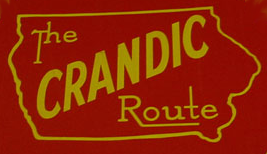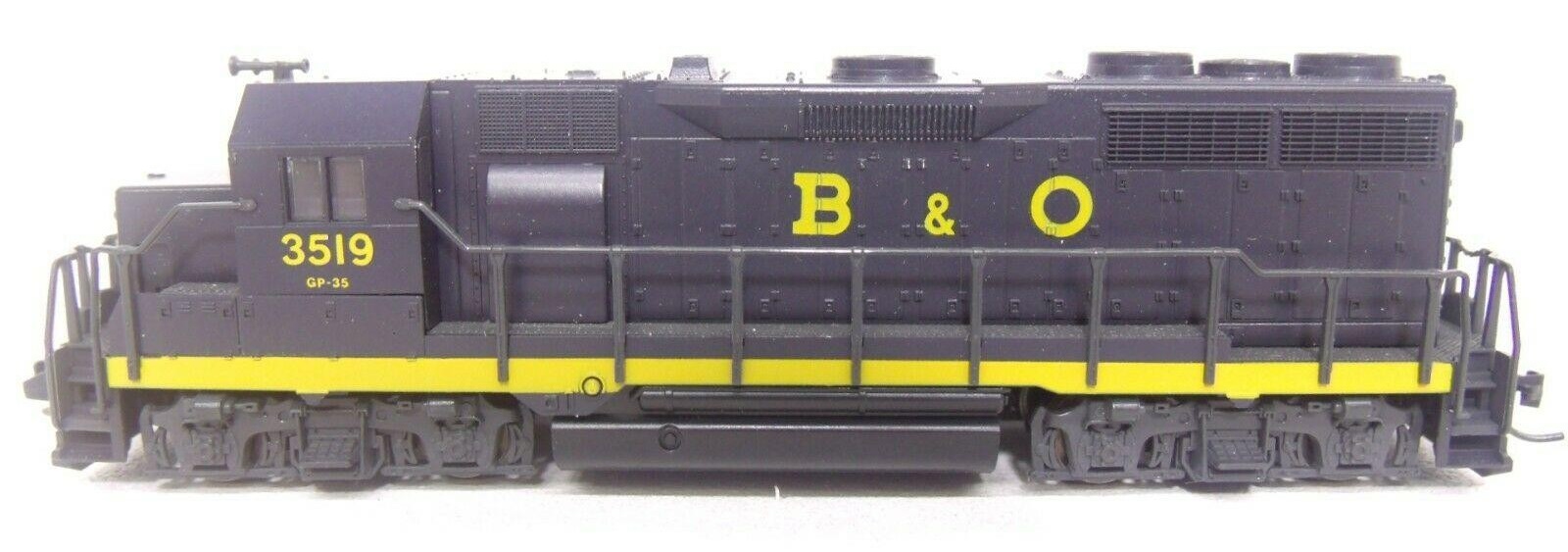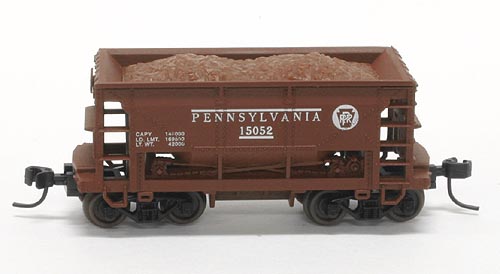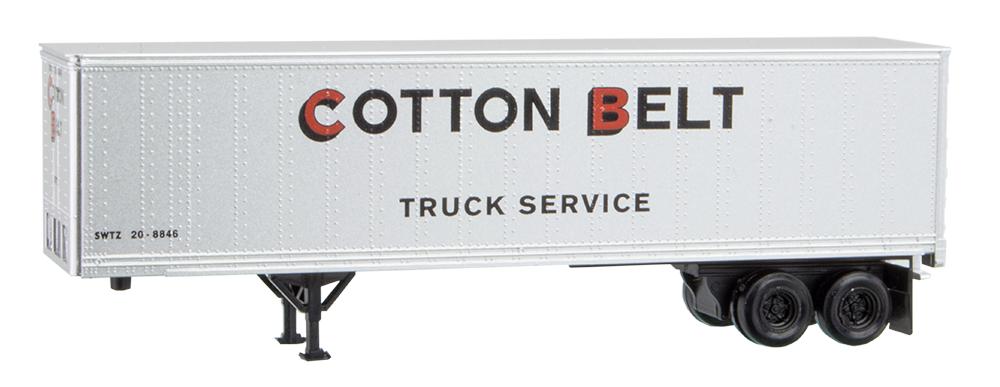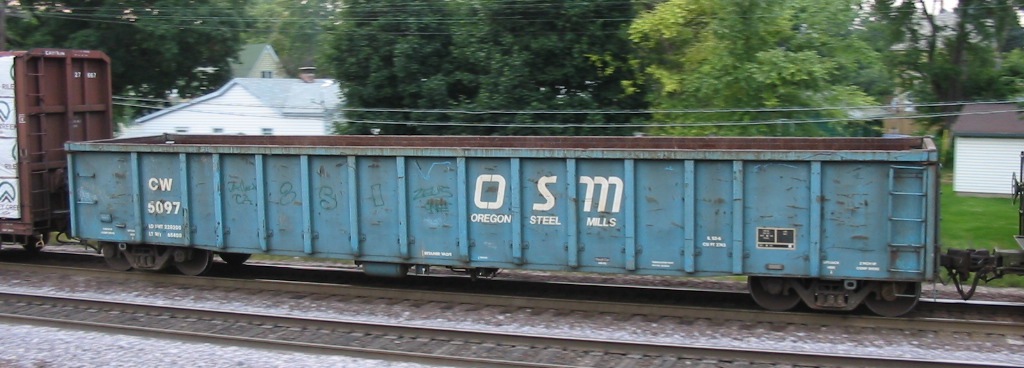Model Information: The ends can actually be dropped! This feature makes this model unique among N Scale gondola toolings.
This model is equipped with National B-1 Trucks w. short extension (MTL 003 02 151 (1195)) and one end and w. medium extension on the other end.
This model is equipped with National B-1 Trucks w. short extension (MTL 003 02 151 (1195)) and one end and w. medium extension on the other end.
Prototype History: In US railroad terminology, a gondola is an open-topped rail vehicle used for transporting loose bulk materials. Because of their low side walls, gondolas are also suitable for the carriage of such high-density cargoes as steel plates, steel coils, and bulky items such as prefabricated sections of rail track. For weather-sensitive loads, these gondolas are often equipped with covers.
All-steel gondolas date back to the early part of the 20th century. However, most of the early ones were shorter and used 40' designs. The ubiquitous 50' steel gondola we see modeled so often today are typical of railcars produced since the end of the second world war. In the late 1940s, steel became once again readily available and new, longer gondolas were produced to transport material for America's booming economy. Generally, these 50 foot cars have a capacity of 70 tons and were actually 52'6" long. The first models of this design were produced by the Erie Railroad and the Greenville Steel Car Co, but nearly identical cars were produced by Pullman, ACF and Bethlehem.
All-steel gondolas date back to the early part of the 20th century. However, most of the early ones were shorter and used 40' designs. The ubiquitous 50' steel gondola we see modeled so often today are typical of railcars produced since the end of the second world war. In the late 1940s, steel became once again readily available and new, longer gondolas were produced to transport material for America's booming economy. Generally, these 50 foot cars have a capacity of 70 tons and were actually 52'6" long. The first models of this design were produced by the Erie Railroad and the Greenville Steel Car Co, but nearly identical cars were produced by Pullman, ACF and Bethlehem.
Road Name History: This line is popularly known as the Crandic. That’s “CR-and-IC”. This line was originally an electric interurban line between its namesake cities in Iowa. Like many interurban lines especially in Iowa, the Crandic did have significant freight traffic.
In 1953 passenger service was discontinued and the trolley wire de-energized. Diesels took over the freight service. In 1980, Crandic snapped up a connecting 6 mile branch from the bankrupt Rock Island. The following year, they bought a connecting 21 mile branch from the Milwaukee Road. This brought the Crandic up to its current size, 60 miles of mainline and 40 track miles of yards, spurs and sidings.
Until 2004, Crandic ran a through freight daily in addition to the many local freights. However they decided to concentrate on the locals and arranged with Iowa Interstate to handle the through freight. In June of 2008, a severe flood caused the collapse of Crandic’s bridge over the Cedar River. That bridge has been rebuilt. Alliant Energy owns the railroad today.
In 1953 passenger service was discontinued and the trolley wire de-energized. Diesels took over the freight service. In 1980, Crandic snapped up a connecting 6 mile branch from the bankrupt Rock Island. The following year, they bought a connecting 21 mile branch from the Milwaukee Road. This brought the Crandic up to its current size, 60 miles of mainline and 40 track miles of yards, spurs and sidings.
Until 2004, Crandic ran a through freight daily in addition to the many local freights. However they decided to concentrate on the locals and arranged with Iowa Interstate to handle the through freight. In June of 2008, a severe flood caused the collapse of Crandic’s bridge over the Cedar River. That bridge has been rebuilt. Alliant Energy owns the railroad today.
Brand/Importer Information: Micro-Trains is the brand name used by both Kadee Quality Products and Micro-Trains Line. For a history of the relationship between the brand and the two companies, please consult our Micro-Trains Collector's Guide.
Manufacturer Information: 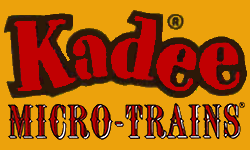 Kadee Quality Products originally got involved in N-Scale by producing a scaled-down version of their successful HO Magne-Matic knuckle coupler system. This coupler was superior to the ubiquitous 'Rapido' style coupler due to two primary factors: superior realistic appearance and the ability to automatically uncouple when stopped over a magnet embedded in a section of track. The success of these couplers in N-Scale quickly translated to the production of trucks, wheels and in 1972 a release of ready-to-run box cars.
Kadee Quality Products originally got involved in N-Scale by producing a scaled-down version of their successful HO Magne-Matic knuckle coupler system. This coupler was superior to the ubiquitous 'Rapido' style coupler due to two primary factors: superior realistic appearance and the ability to automatically uncouple when stopped over a magnet embedded in a section of track. The success of these couplers in N-Scale quickly translated to the production of trucks, wheels and in 1972 a release of ready-to-run box cars.
In October 1990 Kadee separated in two companies, with the newly created Micro-Trains® Line Co. continuing the Z, Nn3, and N Scale product ranges, with Kadee retaining the HO range.

In October 1990 Kadee separated in two companies, with the newly created Micro-Trains® Line Co. continuing the Z, Nn3, and N Scale product ranges, with Kadee retaining the HO range.
Item created by: Lethe on 2015-05-31 17:46:30. Last edited by gdm on 2020-06-05 18:52:09
If you see errors or missing data in this entry, please feel free to log in and edit it. Anyone with a Gmail account can log in instantly.
If you see errors or missing data in this entry, please feel free to log in and edit it. Anyone with a Gmail account can log in instantly.



